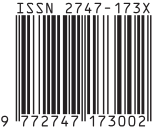Interaction Between Liquid Lead and FeNi Material Using Molecular Dynamics Simulation
DOI:
https://doi.org/10.19184/cerimre.v5i1.31477Abstract
The liquid lead corrosion is often described as a damage of the metal surface due to the high solubility of atoms of the metal that flowing into the liquid metal medium through the diffusion process. This research was conducted to examine the performance of FeNi alloys in liquid lead at various compositions, especially the metal structure conditions due to interactions between metal atoms at high temperatures. To see the performance of this FeNi alloy steel, the parameter that you want to know is the diffusion coefficient of its constituent elements. The potential used is the Lennard-Jones potential. This research uses the LAMMPS molecular dynamics simulation software. From the simulation works can be concluded that the lowest diffusion coefficient of Fe in liquid lead which produces the strongest structure is at the composition (concentration) 65% Fe and 35% Ni with related diffusion coefficient of 5.8582 x 10-12 m2/s, where at this value the corrosion of FeNi in Liquid lead can already be reduced till 77.32%.
Keywords: Liquid lead corrosion, Molecular dynamics, FeNi Alloy, Composition, LAMMPS.








